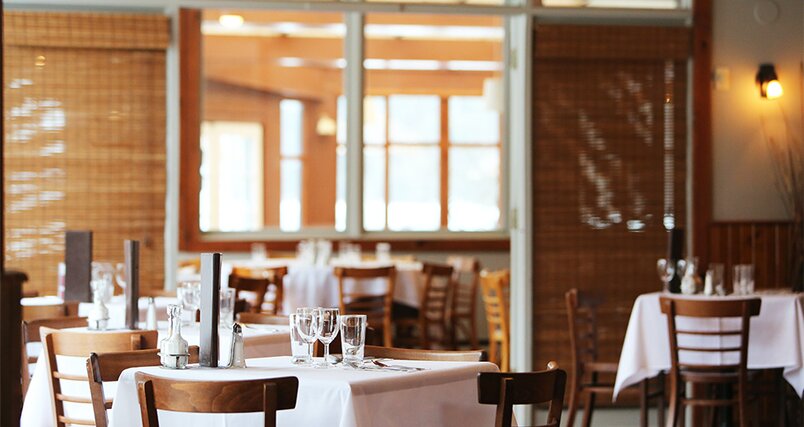Target group analysis in gastronomy
The target group analysis is an important part of every marketing concept and should also be a central element in the considerations of your gastronomy concept. For the successful operation of your restaurant, you should know your guests as well as possible to ensure that they are addressed in a targeted manner. Keep in mind that your restaurant's target audience may change over time. Therefore, it is important to perform the target group analysis regularly and adjust it if necessary. To do this, it helps to ask yourself two key questions:
1. Who visits my gastronomy?
Consider the issue of who actually visits your restaurant and the percentage of singles, families, seniors and groups. If you do not know this right away, you can assign your service staff to write down each evening, for a week or two, which categories of guests are seated at the tables and whether the composition changes depending on the day of the week. Next, discuss whether your current concept appeals to your actual guests.
2. What groups of guests do I want to address?
You should get rid of the idea that everyone has to fall within your restaurant's target audience. Instead, focus on specific groups of people and ask yourself who you want to see as a guest in your establishment in the future. On this basis, you can align your concept according to the wishes and needs of your guest groups.
Whether cheap lunch deals for students, guest WiFi, a daily menu with quick lunch options, children's dishes plus a play corner, or an appealing wine list for couples – each target group has different needs and can be persuaded to visit with a tailored offer.
Defining the target group in gastronomy: classic vs. modern approach
How do you define your own target group in gastronomy? This can be done in different ways. A classic approach is to divide the data according to demographic characteristics (age or gender), socioeconomic factors (education, occupation, and salary), psychographic characteristics (motivation, opinion, and desires), and purchasing behavior (price sensitivity).
Another, more modern approach is the division into "Sinus-Milieus", a target group typology developed by SINUS that groups people according to lifestyles and value attitudes. This method allows the definition of customer and buyer groups, the targeted positioning of products and services, the designation of market segments for new products, the detection of market niches, the efficient addressing of potential customers, and the identification and localization of motivations. There are a total of ten milieus, divided according to basic orientation and social situation. An overview of all milieus can be found on the Sinus Institute website.
Target group examples in gastronomy according to Sinus-Milieus
Examples of Sinus Milieus include the so-called traditional milieu, consisting of the post-war generation and baby boomers, and the nostalgic middle-class milieu, also known as the bourgeois middle. The most important values of the traditional milieu are diligence, modesty, thrift, adaptation to necessities and down-to-earthness. The guiding principle of this group is "preserving traditions". The middle class, on the other hand, values a willingness to perform and adapt, an affirmation of the social order, a desire for professional and social establishment, as well as secure and harmonious conditions (very high price consciousness) and lives according to the guiding principle of "securing what has been achieved.
With regard to the development of the Sinus-Milieus, it can be observed that two new milieus are becoming stronger and larger. These are the expeditive milieu, consisting of ambitious and creative avant-gardes, and the adaptive-pragmatic milieu, consisting of the modern young middle class. Together, these groups have a market share of 22%. Members of this milieu tend to be young (approx. up to 40 years of age) and have a good income or assets.
People from the expeditive milieu are considered trendsetters and are very mobile both mentally and geographically. They are well-connected, goal-oriented, individualistic, and looking for new frontiers and solutions. The adaptive-pragmatic milieu values experiences, fun, comfort and entertainment. Here you will find cosmopolitan people with a simultaneous need for anchoring and belonging. These two milieus, especially the adaptive-pragmatic one, are the most important target groups of today and tomorrow and should be considered by restaurants for that reason alone.
Target group marketing in gastronomy
To be successful in gastronomy, it is imperative that you target your marketing efforts to the audience you want to attract. In order to do this, it is important to have tailored advertising. Different target groups react differently to the same advertising, so it is necessary to emphasize exactly those benefits of your establishment that the target group values.
Potential mistakes in target group marketing
Even if your restaurant has been around for a while, you should regularly ask yourself if you are targeting the right audience or if you might need to break new ground. It may be that your marketing efforts are going in the wrong direction and some of your investments are going nowhere. Some possible reasons:
- Wrong location: For example, if your restaurant is located in a suburb with a lot of public housing, upscale cuisine may be out of place. It is therefore important to always be up to date with what is happening in the surroundings and to adapt to one's own environment if necessary.
- Wrong concept: You may have a great concept, but it has already been overtaken by the next trend. So always keep an eye on current developments, especially if it's a "trendy" concept. Trends come and go quickly, so it is important to be ready to evolve and come up with new propositions.










